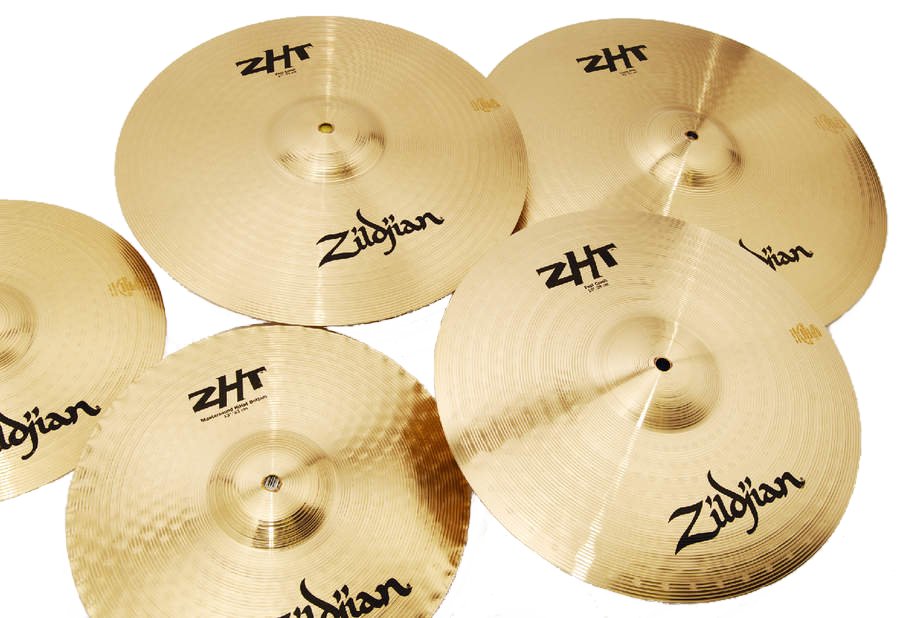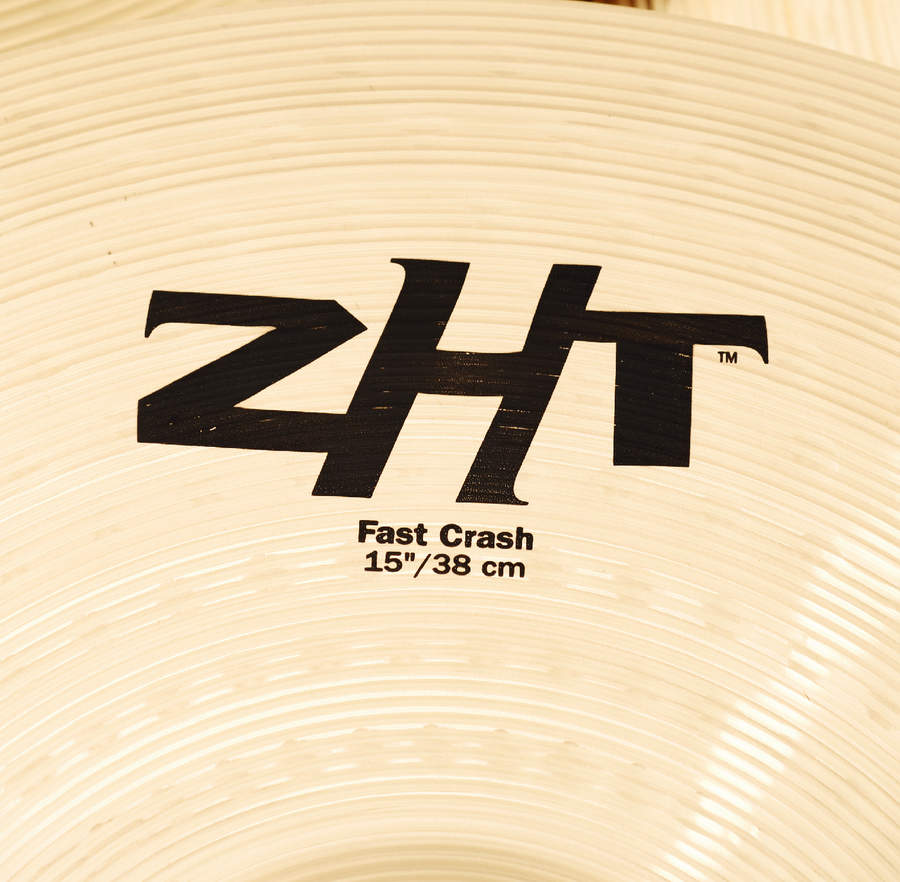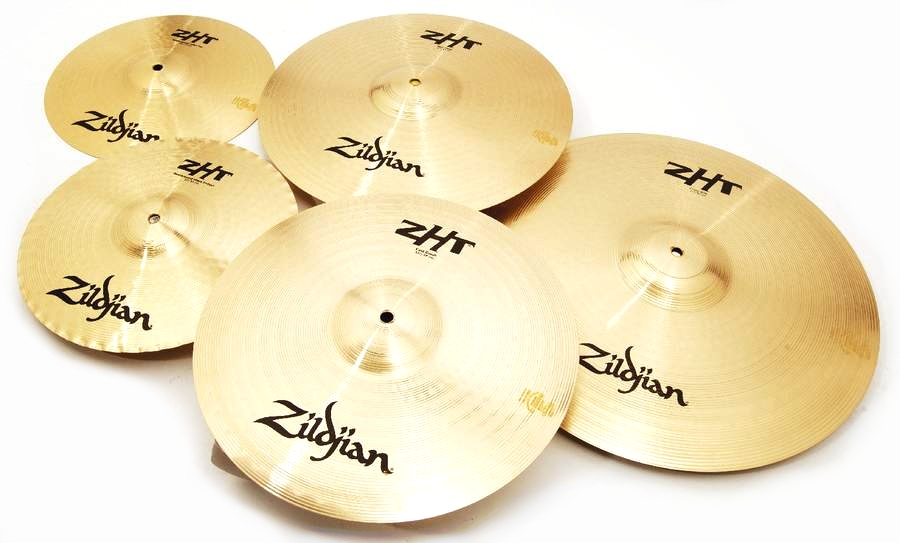MusicRadar Verdict
These new additions to an already extensive range of cymbals are welcome and there is more to the new models than just filling in the gaps. The ample choice of cymbals within the range means that a large and exotic array of cymbals is available on a budget.
Pros
- +
B12 alloy brings these sheet bronze cymbals closer to their cast counterparts, and on a budget.
Cons
- -
Budgets aside, they’re still not quite the real thing.
MusicRadar's got your back



Zildjian's ZHT series is a range of affordable sheet bronze cymbals that features an already impressive array of models. Joining the existing ranks are a pair of Fast Crashes, a Crash/Ride and new pair of Mastersound Hi-Hats.
The ZHT range differs from its ZBT and ZXT stablemates in its use of a B12 bronze alloy. The 12 in B12 represents the percentage ratio of tin to copper in the alloy (12 percent tin to 88 percent copper). The alloy that is used in all other Zildjian sheet bronze cymbals is B8 (eight percent tin to 92 percent copper).
Such an apparently small increase in tin content really does make a difference, especially when you consider that the tin content, even for high-end cymbals, peaks at 20 percent.
Into the mix
Sheet bronze cymbals are produced by cutting discs out of rolled sheets of bronze alloy and then working them (a process that involves hammering, lathing, polishing and so on) into cymbals. This is a much cheaper way of manufacturing cymbals than the conventional method of casting each cymbal individually and then hammering it into shape.
At this end of the market, the sheet bronze method is frequently used by all of the manufacturers. This is not simply to keep costs down, but also because the relatively straightforward manufacturing process will always produce consistent results.
Sonically, sheet bronze cymbals tend to distinguish themselves by being higher in pitch, brighter and quicker to decay than their cast counterparts. Zildjian's use of B12 is clearly an attempt to balance these characteristics with a little more warmth and musicality. The influence of the B12 alloy also extends to the visual appearance, as it gives the cymbals a slightly darker, richer hue.
Want all the hottest music and gear news, reviews, deals, features and more, direct to your inbox? Sign up here.
Stacking up
The ZHT series is already bursting with cymbals, including seven pairs of hi-hats and mini-hats (the latter having been designed in conjunction with Marco Minnemann), over ten varieties of splashes and crashes, a quartet of chinas and EFXs and even a flat ride, which is extremely rare at this price point.
The 13" Mastersound hi-hats are a smaller alternative to an existing pair of ZHT 14" Mastersound hats. Mastersound is the term Zildjian use for hammering the outer edge of the bottom cymbal into a crinkled wave. Both cymbals bear plenty of lathing bands, beneath which sit shallow hammer marks.
The hats are tight, bright and not a little cutting. For their small diameter they are surprisingly loud and in use were clearly audible across the muddiest of backlines. The Mastersound edge helps air to escape when closing the hats, giving them a speedy response, while also providing a pleasing definition to stepping. After hearing this 13" pair, we would ideally like to have heard the 14" equivalents alongside them.
Crashing in
At the other end of the scale and on the other side of the kit (unless you happen to be Simon Phillips or Mike Bordin) is the 20" crash/ride. Cymbals that attempt to straddle the two very different disciplines of crashing and riding are usually interesting specimens, regardless of whether or not they actually succeed at bridging the gap.
So it is with this particular example. When used as a straight ride, the body of the cymbal produces a glassy, almost brittle response that is not far off being only audible to dogs. However, moving up onto the well-proportioned bell the cymbal reveals a completely different side, serving up a meaty feast of clanging authority that is penetrating without being too raw.
Giving the whole thing a whack unleashes a colossal crash that is crammed full of shifting overtones and some splendid convolutions.
The two Fast Crashes (15" and 17") are unsurprisingly a darn sight quicker than the 20" Crash/Ride. The 15" Fast Crash model displays the unmistakable topiness of sheet bronze, giving a decidedly sharp, short burst of noise that was way too shrill. The 17" cymbal, meanwhile, possessed a much better balance of tonality, producing a rapid opening brightness with a deeper note beneath. A harmonious decay rounded things nicely, making it an infinitely more pleasing cymbal.
The reality of owning affordable cymbals is that, if you are serious, they are inevitably a stepping stone to more expensive, cast cymbals. The B12 bronze used in the ZHT series brings with it a little more tonal sophistication that should delay the day that the cymbals are traded in.
MusicRadar is the number 1 website for music makers of all kinds, be they guitarists, drummers, keyboard players, djs or producers...
GEAR: We help musicians find the best gear with top-ranking gear round-ups and high- quality, authoritative reviews by a wide team of highly experienced experts.
TIPS: We also provide tuition, from bite-sized tips to advanced work-outs and guidance from recognised musicians and stars.
STARS: We talk to musicians and stars about their creative processes, and the nuts and bolts of their gear and technique. We give fans an insight into the actual craft of music making that no other music website can.
